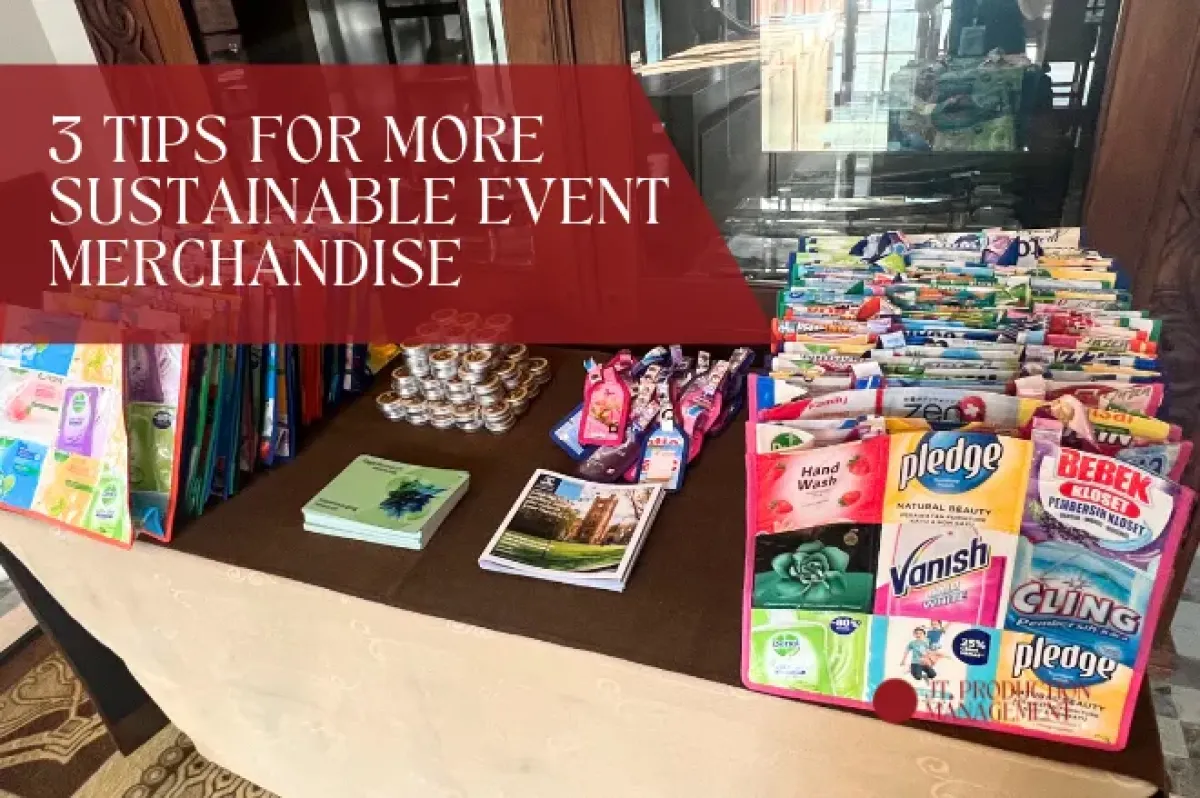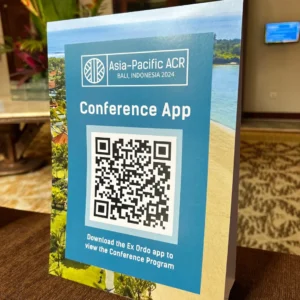
3 Tips for More Sustainable Event Merch
Branded merchandise is a great way to increase brand exposure while providing useful or memorable items for your event attendees to enjoy, but the environmental impact can be huge if you’re not careful!
In this blog, we look at how we tackle this issue at JTPM and provide some quick hints and tips to help you make more sustainable event choices too.
Before sourcing and ordering any event merch, we ask three simple questions:
- Is it necessary – will the item really enhance the experience, and are there alternative options that may help achieve the same outcome? For example, physical notebooks vs. mobile event app with note-taking function.
- What is the lifespan – will the item be useful both at the event as well as beyond the event, and if so, for how long? There is still too much single-use event merch being thrown away and we have a responsibility to reduce this!
- Who will be impacted and how – what are the immediate/ short- or long-term impacts on the environment, people or places linked with that item? Note: these can also be positive impacts providing a compelling reason for rather than against.
Here are three ways to make more mindful and sustainable decisions about your event merch:
- Choose recycled materials – the most important thing when it comes to event merchandise is to avoid single use and brand-new products or materials. Always opt for recycled, second-hand or re-purposed items where- ever possible. Here are some examples we regularly recommend and use:
- Water bottles: provide guests with a re-usable water bottles and access to water stations, rather than single use spring water bottles
- Event Programs: event apps and digital programs are more sustainable option than printed program, which are usually thrown out straight after the event, plus you can include extra engagement features too like quick polls, chat and more.
- Notebooks: notebooks and writing pads are handy and almost expected at many big Conference events. Consider going paperless by using event apps and other digital options, but if you must provide notebooks always make sure they are made from recycled materials.
- Lanyards: are now available in recycled PET, bamboo and other sustainable materials. Keep the branding simple/ generic so they can be re-used by event attendees at any time
- Goodie bags: it’s fairly easy to source goody bags made from materials such as recycled water bottles, plastic bags or paper. Check out the re-purposed local shopping bags we opted for at the AP-ACR Conference in Bali recently
- Pens: they seem to disappear in a blink of an eye, and it feels like you can never have too many, so make sure you’re purchasing pens made from recycled materials or provide re-fillable and re-usable pens.
- Quantities – whether it’s food and beverage or branded merchandise, our goal is to not over-order and end up with excessive amounts of left-over, un-used or wasted products. It can sometimes be hard to know exact numbers but there are some ways to get an estimate that is realistic including:
- Event registration – asking participants to register or book a ticket in advance, even if it’s for a free event, is a great way to gauge the numbers of attendees to expect, as well as merchandise quantities to order. There are many benefits to this, like capturing audience demographics and other handy data, and being able to engage in direct marketing.
- On demand – make promotional items an optional extra and place the decision back in the hands of your guests. Simply explain you’re trying to reduce waste and ask them to consider the impact of their consumption before ordering any items. This option can also save you money on unnecessary or unwanted items or can make you money if you choose to charge extra for these items.
- Use data – look at past event results, both qualitative and quantitative, for an indication of quantities, excess stock and what was popular, in demand or not. Say goodbye to guess work and assumptions – make sure you track and capture this information for all your events to help in the decision-making process in future.
- Social Impact – a customised gift or keepsake can be a lovely way to say thank you to event guests, providing a fond reminder of their experience for many years to come. It can be even more memorable if the item is not generic or mass-produced but has a moving story or message behind it. Even more so, if it’s helping to make a real difference in our community and the world!We have partnered with the team at SisterWorks on a number of occasions to produce hand-crafted gifts and keepsakes for events. These products are made by talented and creative refugee, migrant and asylum seeker women and use recycled materials wherever possible. Items are often inspired by their home country and culture, and all proceeds go towards supporting the employment & entrepreneurship services provided by the organisation. There are many social enterprises and not-for-profit organisations like SisterWorks who are open to collaborating on events, as well as many local Indigenous owned brands like Indigiearth, Kinya Lerrk and Kakadu Plum Co to name a few. Make conscious choices about your suppliers, support local and make a bigger, more positive impact.
Choosing to go green and sustainable may be a little more expensive at times (not always!), but at JTPM we consider it an investment into a better future for everyone. Sharing your sustainability journey provides another way to connect with your event audience in a more meaningful and impactful way and will help convert them into loyal supporters and advocates for your brand.
Contact us to book an event discovery and design session, and get ready to make your next event extraordinary, impactful and more sustainable!

Choose recycled/ recycle-able merchandise and use event apps or digital programs to help reduce the amount of products going into landfill.
